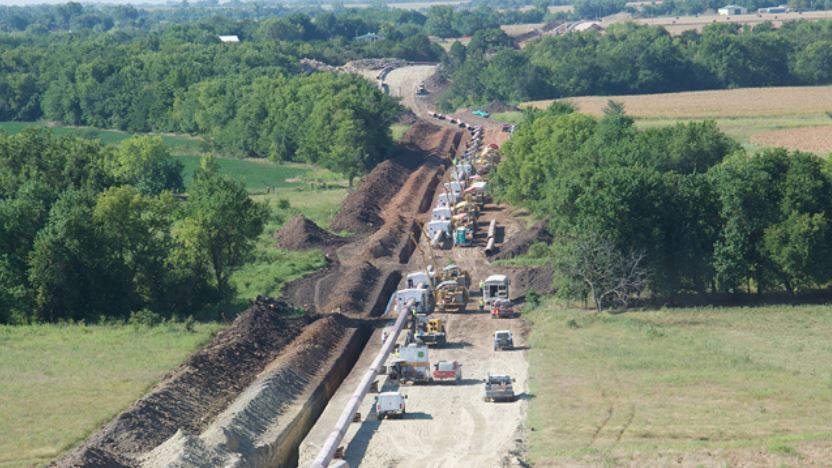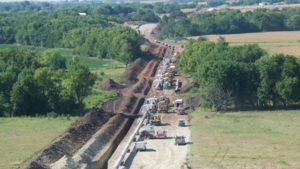Why new Canadian pipelines make sense

Is it better to cancel pipeline projects only to rely on middle eastern suppliers and lose millions of dollars and many jobs at the same time?
by Bruce Lantz

One thing is being largely left out of the pro- vs anti-pipeline discussions of late – the plain and simple fact that we need them.
No one has captured the essence of this argument better than Jock Finlayson, executive vice-president of the Business Council of British Columbia, Canada. In a November column for Troy Media, Finlayson and co-author Denise Mullen, the BCBC’s director of environment and sustainability, outline in no uncertain terms how Canada, in particular, has abandoned good business sense and has allowed pipeline growth in the United States to far outstrip it, thus jeopardizing Canada’s ability to get its vast oil and gas resources to market.
The statistics they quote are disturbing. Canada has about 840,000 kilometres of pipelines, compared with 4.3 million kilometres in the US. Our neighbours to the south can boast a 25% increase in hazardous liquids pipelines in the past decade, and two-thirds of the US pipeline network transports refined petroleum products or crude oil. While the US added 8,600 kilometres of pipeline capacity in 2014-15, equivalent to 7.5 Trans Mountain pipelines, Canada added zero and, in fact, has not built a major oil pipeline in many years.
“As Canada dithers and the volume of our oil and natural gas available for export expands, constrained pipeline capacity inevitably means price discounting (as well as more oil being shipped by rail),” the authors say. “Revenues for Canadian oil producers decrease as shipping costs rise and other suppliers make inroads in the markets where energy demand is growing.”
That means “collateral damage” – the loss of full-time, well-paying jobs, shrunken energy industry supply chains and diminished revenues for government, according to Finlayson and Mullen.
Facts are facts: Canada’s only foreign market for crude oil and natural gas is the United States. And so it isn’t hard to see that, “A one-customer business model is obviously risky for any supplier,” say Finlayson and Mullen.
The problem is simple, when not cluttered with the need to explain the obvious to those who would see all pipelines vanish from the landscape. The US wants to become a net exporter of energy instead of a net importer. So they have boosted domestic production, in 2015 reaching the highest production levels since 1972 and with more growth expected in the coming decade, especially under the new American administration, which has vowed to increase energy security and depend less on others.
Of course, say Finlayson and Mullen, with the right pitch the US could be convinced to view Canada as a “reliable and friendly” source of energy as they seek to lessen their dependence on Middle Eastern and other offshore suppliers. This, they say, is the argument Canadian governments should be making to American policy-makers.
The reality is that petroleum products are needed now and will be for many years to come. International Energy Agency (IEA) projections suggest that petroleum will be needed to meet a sizeable portion of the world’s energy demands despite governments striving to meet the clamouring demands of climate change activists. The IEA predicts China will be the world’s largest oil importer by 2020 while India will rank second by 2035 – a seemingly obvious growth opportunity for Canada’s energy sector.
“One thing is certain: If Canada fails to develop the capacity to export oil and other energy products to Asia, other suppliers (including the US) will happily fill the void,” say the authors.
But thus far, Canada is failing.
In an interview, Finlayson said the solution for Canada is building the infrastructure and market connections to enable Canadian energy to be sold globally instead of being restricted to North American markets. Unfortunately, the nation is lagging behind.
“Unless we do this, Canadian energy will continue to be priced at a discount, to the detriment of the entire country,” he said, adding that the market, not governments prodded by pipeline protest factions, should be allowed to rank the appeal of different pipeline proposals.
Much potential lies with liquefied natural gas (LNG) – if government regulators and the industry can create the right environment to ensure its development on Canada’s west coast.
“LNG in some ways is no different that oil,” Finlayson said. “It is a hydrocarbon resource that the world wants and needs – and Canada is positioned to supply, if we make the right decisions.
But, he warned, if the LNG sector stalls, then the vast natural gas resource based in the West risks becoming a “stranded asset” as the US continues to move toward energy self-sufficiency. If Canada does not find a way to access global markets by developing LNG, then the upstream sector in Canada will shrivel.
As for crude oil, Finlayson has no doubts that shipment by pipeline is the most efficient option and also the safest. While rail is a viable alternative, he said, it cannot realistically substitute for pipelines in an overall quantitative sense, given the size of the Western Canadian oil resource.
“People worried about climate change should focus on the demand for energy, not the supply side of the equation,” he said. “The global environment will not be better off if future world demand growth for oil (or natural gas) ends up being met by increased supplies from Russia, Iran or the United States rather than from Canada.”
That is the basic flaw in the anti-pipe-line advocacy seen from environmental organizations. They systematically fail to situate their relentless critique of the Canadian hydrocarbon and pipeline industries in the proper global context. They pretend that stopping oil and pipeline projects from advancing in Canada will accelerate the shift to a lower carbon economy worldwide.
“I have seen no evidence that supports this presumption,” said Finlayson.
